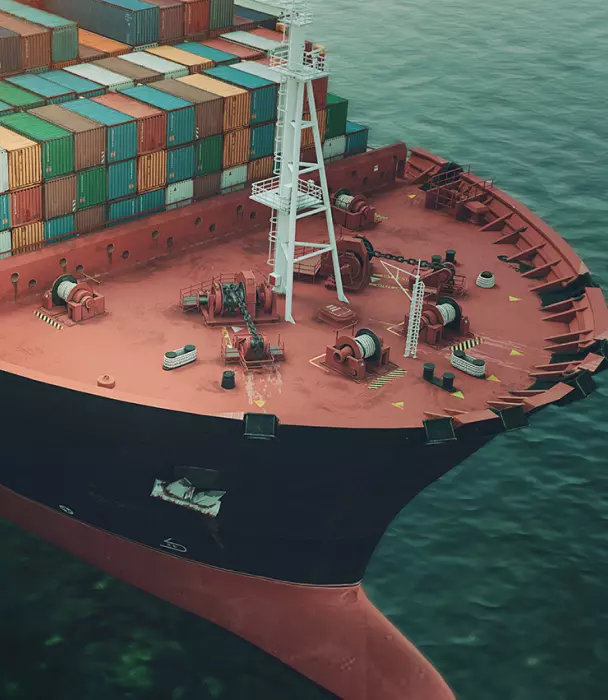The shipping and freight forwarding industry is constantly evolving, driven by technological advancements, changing customer expectations, and global events. As we enter 2024, it's more important than ever for businesses to stay ahead of the curve and embrace the trends shaping the industry. These trends are particularly relevant in the current global landscape, where rapid changes in technology and trade dynamics are reshaping the way we approach shipping and logistics. Here are the top trends we can expect to see in 2024:
Green and Sustainable Logistics:
Sustainability remains a key focus in the shipping industry. With increasing environmental concerns, businesses are seeking greener alternatives, such as utilizing biofuels, investing in solar-powered warehousing, and implementing eco-friendly packaging. Companies like Maersk and Hapag-Lloyd are leading the way in sustainable shipping practices. Shippers and importers are increasingly choosing to partner with forwarders who demonstrate a commitment to sustainable logistics.
Digital Transformation:
The digitization of shipping and freight forwarding processes is set to accelerate. A growing number of companies are embracing cloud-based platforms, utilizing blockchain for secure transactions, and leveraging AI for decision-making. These advancements are already evident in streamlined operations, cost reductions, enhanced reporting and analysis capabilities, resulting in heightened efficiency, transparency, and improved customer experiences.
Last-Mile Delivery Innovations:
E-commerce growth and same-day delivery demands are driving last-mile delivery transformations. Innovations like autonomous vehicles, drones, and smart lockers are becoming increasingly prevalent. Forwarders offering efficient, cost-effective last-mile solutions will gain a competitive edge.
Resilient Supply Chains:
The COVID-19 pandemic highlighted vulnerabilities in global supply chains. In response, businesses are focusing on building resilient supply chains through diversifying suppliers, implementing real-time monitoring systems, and investing in predictive analytics. These strategies lead to more robust and adaptable supply chains capable of adapting to unforeseen challenges.
Emphasis on Data Analytics and Predictive Insights:
Data analytics is revolutionizing shipping and freight forwarding. Leveraging big data, AI, and predictive analytics, companies can optimize cargo routes, identify bottlenecks, and improve decision-making which increases overall efficiency. Real-time insights enable immediate problem-solving and continuous improvement.
Shift Towards Nearshoring and Regionalization:
The trend of nearshoring and regionalization is gaining momentum. Companies are looking to shorten supply chains, reduce reliance on distant suppliers and transportation costs, as well as mitigate risks associated with geopolitical tensions and trade uncertainties. This shift is evident in the growing number of regional trade agreements and partnerships.
Rise of Autonomous and Smart Ships:
The maritime sector is witnessing the emergence of autonomous and smart ships. These vessels, equipped with advanced navigation systems, AI, and remote monitoring technologies, promise enhanced safety and operational efficiency. While fully autonomous ships are still in the developmental stage, we expect to see significant progress in this area in 2024.
Increased Focus on Cybersecurity:
With the growing reliance on digital systems, cybersecurity has become a critical concern for the shipping and freight forwarding industry. Companies are investing in robust cybersecurity measures to protect their data and systems from cyber threats, ensuring the integrity and confidentiality of sensitive information.
Customer-Centric Approach:
Adapting to the ever-changing expectations of customers is paramount. Forwarders are focusing on delivering an unparalleled service experience characterized by end-to-end visibility, tailored solutions, and exceptional customer care. Technologies like self-service portals and real-time shipment tracking, as well as advanced technology utilization are key to meeting these demands.
As we look ahead to 2024, the shipping and freight forwarding industry is set to continue and undergo substantial changes. Embracing these trends will be crucial for businesses to stay competitive and navigate the complexities of the global marketplace. By staying informed and adaptable, companies can capitalize on these emerging opportunities and chart a successful course for the future.
This article provides an overview of the expected trends in shipping and freight forwarding for the year 2024. To leverage the latest technological advancements that can streamline your operations and propel your business forward, we invite you to create your account here.


